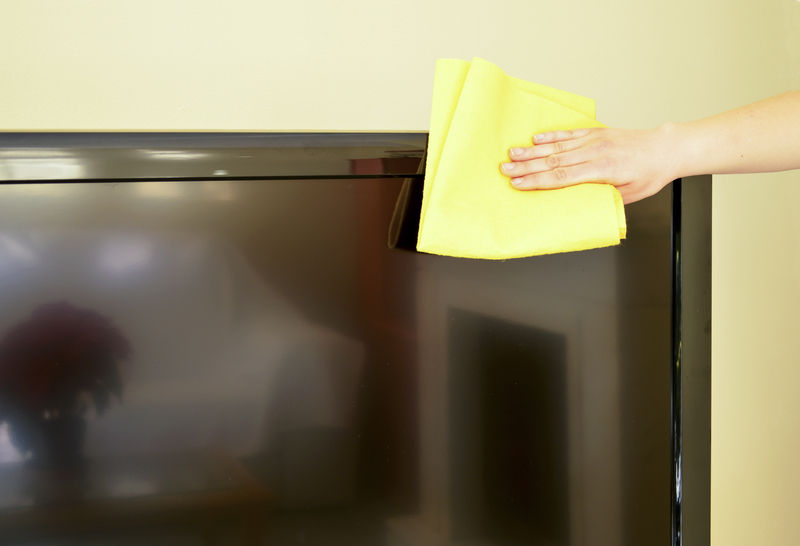A Deep Dive into Steam Cleaning Leather Sofas
Posted on 18/05/2025
A Deep Dive into Steam Cleaning Leather Sofas
Leather sofas are timeless additions to any living space, offering luxury, comfort, and a touch of sophistication. However, maintaining their pristine appearance requires regular and proper cleaning. One method gaining popularity is steam cleaning leather sofas. But is steam cleaning truly effective for leather furniture? This comprehensive guide provides detailed insights into steam cleaning leather couches, its advantages, precautions, and step-by-step instructions for best results.

Understanding Leather Sofa Cleaning
Before exploring the intricacies of steam cleaning leather furniture, it's crucial to understand what makes leather distinct from other upholstery materials. Leather is a natural, porous material that absorbs moisture and can be sensitive to harsh cleaning techniques or chemicals. If not treated properly, leather can crack, discolor, or suffer irreversible damage.
Types of Leather Found in Sofas
- Full-Grain Leather: The highest quality, retaining the entire grain layer. It's durable but can absorb moisture rapidly.
- Top-Grain Leather: Slightly thinner and more processed, but still high in quality and relatively moisture-resistant.
- Bonded Leather: Made from leather scraps bonded together. This type is less durable and more prone to damage from overexposure to moisture or heat.
- Faux Leather: A synthetic alternative, often more resistant to water but less breathable.
What is Steam Cleaning?
Steam cleaning uses vaporized water produced at high temperatures to remove dirt, bacteria, and grime from various surfaces. When applied to upholstery, the hot vapor penetrates deep into fibers (or pores, in the case of leather), loosening embedded debris and bacteria. Unlike traditional cleaning methods, steam cleaning often avoids the need for harsh chemicals, making it a more eco-friendly choice.
Key Advantages of Steam Cleaning Sofas
- Effective Sanitization: High-temperature steam can kill bacteria and dust mites.
- Chemical-Free: Generally requires only water, making it safe for homes with children and pets.
- Quick Drying: Vapor, as opposed to liquid, leads to shorter drying times.
- Revives Upholstery: Steam can help in restoring the natural sheen and softness of leather.
Is Steam Cleaning Safe for Leather Sofas?
The primary concern with steam cleaning leather sofas revolves around leather's sensitivity to moisture and heat. Excessive exposure can lead to warping, fading, or cracks. However, when performed correctly and with the appropriate settings, steam cleaning can be an effective way to clean and sanitize leather sofas.
Caution: Steam cleaning is not advisable for all types of leather. Always check the manufacturer recommendations for your specific furniture before opting for this method.
When Should You Avoid Steam Cleaning Leather Couches?
- Delicate Leathers: Very soft or unfinished leathers are more susceptible to water and heat damage.
- Cracked or Dried Leather: If your sofa already has notable damage, steaming can worsen the condition.
- Poorly Sealed Surfaces: Leathers without a proper protective coating can absorb too much moisture.
Preparation: Getting Ready for Steam Cleaning
Proper preparation is crucial for steam cleaning your leather sofa effectively and safely.
1. Inspect the Sofa
Look for signs of damage, dryness, or cracks. If you spot any, address those issues before applying any moisture or heat. Also, remove dust using a vacuum with a soft brush attachment.
2. Test a Hidden Area
Always test the steam on an inconspicuous spot first to check for discoloration, warping, or any other damage. Wait for that spot to dry fully before proceeding.
3. Read the Care Label
Refer to the sofa's care label or manufacturer's website. Some explicitly prohibit steam cleaning. If you're unsure, contact the manufacturer for guidance.
Step-by-Step Guide: How to Steam Clean a Leather Sofa
1. Gather Necessary Supplies
- Steam cleaner: Preferably one with adjustable settings and a specialized upholstery attachment.
- Distilled water: Tap water may cause mineral deposits on your sofa.
- Microfiber cloths: For wiping excess moisture.
- Leather conditioner: To rehydrate and nourish the leather after cleaning.
- Vacuum; With soft brush attachment for pre-cleaning dust and debris.
2. Vacuum the Sofa
Remove loose dirt, dust, and pet hair from all surfaces, including crevices. This prevents the particles from becoming embedded during the cleaning process.
3. Set the Steam Cleaner
Fill the steam cleaner with distilled water and attach the appropriate upholstery head. Set the machine to its lowest or most gentle steam setting to avoid overheating the leather.
4. Start Steaming the Sofa
- Move quickly: Do not linger over one spot. Instead, use continuous, smooth movements.
- Do not soak: The goal is to use as little moisture as possible to prevent water absorption.
- Wipe immediately: After steaming each area, gently blot with a dry microfiber cloth to remove any residual moisture.
5. Dry Thoroughly
Allow the sofa to air dry completely. Never use heat sources like hair dryers, which can damage leather fibers.
6. Apply Leather Conditioner
Once the sofa is dry, apply a high-quality leather conditioner to restore moisture and flexibility. This step is essential as steam can cause the leather's natural oils to evaporate.
Benefits of Steam Cleaning Leather Sofas
When performed correctly, steam cleaning your leather sofa offers several unique advantages:
- Deep Sanitization: Steam reaches beyond the surface, lifting grime and eliminating bacteria that regular wiping might miss.
- Odor Removal: Persistent smells from pets, spills, and general use can be neutralized without masking agents.
- Gentle Yet Effective: No abrasive scrubbing is required, reducing the risk of surface damage.
- Allergy Reduction: Dust mites and allergens are drastically reduced, creating a healthier environment.
Common Mistakes to Avoid When Steam Cleaning Leather Couches
- Over-Saturation: Using too much steam or passing repeatedly over the same spot can penetrate the leather, causing swelling, stains, or weakening the material.
- Neglecting Test Spots: Skipping a preliminary test can lead to widespread damage, especially with colored or antique leathers.
- Not Conditioning: Failing to restore the leather's oils after cleaning will leave it dry and prone to cracking.
- Using Tap Water: Tap water may contain minerals that leave unsightly marks on the leather surface.
Alternative Methods to Clean Leather Sofas
If you're unsure about steam cleaning your leather furniture, several alternative cleaning methods exist:
- Damp cloth wiping: Use a slightly moistened microfiber cloth to gently clean the surface.
- Specialized leather cleaners: Commercial products formulated specifically for leather are widely available.
- Homemade solutions: A mix of vinegar and water can be used for stains, but always perform a patch test first.
Professional Cleaning Services
For expensive, antique, or delicate leather sofas, professional upholstery cleaners may be the safest bet. They have access to industry-grade steamers, cleaning products, and experience in treating various leather types, ensuring the best possible outcome for your investment.
Leather Sofa Steam Cleaning FAQs
Can you steam clean all types of leather furniture?
No. While steam cleaning leather sofas is safe for many finished or top-grain leathers, it is not recommended for unfinished, suede, or badly damaged leather.
How often should you steam clean your leather sofa?
In general, steam clean leather sofas no more than twice a year. Frequent steam exposure can dry out leather. Ongoing maintenance should include weekly vacuuming and conditioning every 3-6 months.
What happens if leather gets too wet?
Excess moisture can cause the leather to warp, discolor, or develop mold spots. Always use the lightest steam setting and blot away moisture immediately.
Which steam cleaner is best for leather upholstery?
Look for models with adjustable steam output and specialized upholstery or leather-safe attachments. Read user manuals to ensure compatibility with leather furniture.
Does steam kill germs on leather sofas?
Yes. High-temperature steam cleaning eradicates germs, bacteria, dust mites, and some viruses, offering a hygienic environment in your home.

Tips and Best Practices for Steam Cleaning Leather Sofas
- Always read care instructions on your leather furniture before attempting steam cleaning.
- Never use harsh chemicals on top of steam, as leather can react unpredictably with certain cleaners.
- Ventilate the room well post-cleaning to help with the drying process.
- Keep pets and children away from the sofa until it is fully dry and reconditioned.
- Regular conditioning is key to maintaining soft, supple leather.
Conclusion
Steam cleaning leather sofas is an effective and modern way to maintain the beauty and hygiene of your beloved leather furniture. With the right approach, materials, and techniques, steam cleaning can breathe new life into your sofa, eradicating bacteria and grime without sacrificing the health of the leather. Remember, attention to detail, using proper equipment, following manufacturer guidelines, and thorough post-care regimens (like conditioning) ensure your leather sofa stays luxurious, vibrant, and inviting for years to come.
Looking to unlock the full potential of your leather sofa? Consider steam cleaning as a part of your care routine, and enjoy a cleaner, healthier, and more radiant living space.




